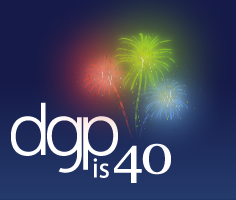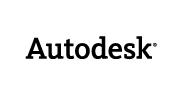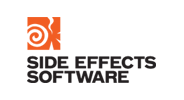
DGPis40:
Scientific Workshop & 40th Anniversary Reunion
Wednesday, May 28 - Friday, May 30, 2008
University of Toronto, Toronto, Ontario
Birds of a Feather Sessions
As part of the DGPis40 Scientific Workshop, Birds of a Feather sessions (BOFs) will be scheduled after lunch on Thursday, May 29, to provide less structured networking opportunities and research discussion for participants.
Last updated: May 27, 2008
The Academic Side of Graphics and HCI
Michael Neff, Assistant Professor, University of California, Davis
This will be a discussion oriented session in which impromptu groups are formed to brainstorm around a given topic. Each group will report the highlights of their discussion at the end of lunch. The exact topics will be chosen based on the interests of the attendees, but the following three titles are suggested to get things started:
Short Bio:
Michael Neff is an assistant professor of computer science and
technocultural studies at the University of California, Davis. His
research interests include tools for character animation, understanding
expressive movement, gesture, interactive techniques and performance. He
received his PhD from DGP in 2005 and was a post-doctoral fellow at the
Max Planck Institute for Informatics.
Graphics & Animation
Dimitris Metaxas, Distinguished Professor,
Director Center for Computational Biomedicine, Imaging and Modeling,
Rutgers University
Come to discuss current and future challenges in fluid simulation and animation.
Short Bio:
Dimitris Metaxas is a Professor II (Distinguished) in the Division of
Computer and Information Sciences and Professor II in the Department of
Biomedical Engineering at Rutgers University. He is directing the Center
for Computational Biomedicine, Imaging and Modeling (CBIM). Dr. Metaxas
has been conducting research towards the development of formal methods
upon which both computer vision, computer graphics and medical imaging
can advance synergistically. In 1995 with N. Foster, he pioneered the
use of Navier Stokes equations for fluid animations and this work won
several best paper awards. Dr. Metaxas has published over 230 research
articles in these areas and has graduated 24 PhD students. His research
has been funded by NSF, NIH, ONR, AFOSR and the ARO. Dr. Metaxas has
published a book on his research activities titled ``Physics-based
deformable models: Applications to computer vision, graphics and medical
imaging'' which was published by Kluwer Academic. He was awarded a
Fulbright Fellowship in 1986, is a recipient of an NSF Research
Initiation and Career awards, an ONR YIP, and is a Fellow of the
American Institute of Medical and Biological Engineers, ACM and IEEE. He
has been the Program Chair of ICCV 2007, and the Senior Program Chair
for SCA 2007. He is currently the General Chair of MICCAI 2008.
Entrepreneurs
Ron Baecker, Professor, Department of Computer Science, University of Toronto
Garry Grossman (MSc '77), Attorney and Partner, Schiff Hardin LLP,
Washington, DC
Software entrepreneurs and would-be entrepreneurs: Come and share your experiences and discuss your ideas with one another, and with a battle-scarred high-tech entrpreneur and an experienced intellectual property protection attorney.
Gaming & Graphics: Futures
David Blythe, Software Architect, Microsoft Corporation
This session will begin with a short introduction on evolving game technologies – modeling, rendering, and physical simulation – followed by open discussion.
Short Bio:
B.Sc. 1983, M.Sc. 1985, both at UofT. Left PhD program in 1991 to join
Silicon Graphics. Contributed to several high-end graphics accelerator
designs as well as the OpenGL specification. From 2000-2003 design
contributor and specification editor for OpenGL ES for embedded systems,
while working at a random valley start up. Joined Microsoft in 2003 as
graphics architect in the Graphics and Games Technology group in the Windows
division and worked on the design of Direct3D 10. Currently oversee the
evolution of the graphics and windowing subsystem for the Windows product.
Interests include the design of large software systems and hardware
architecture support for parallel processing.
User Interface Software
Brad Myers, Professor, Human Computer Interaction Institute, Carnegie Mellon University
Early projects at the DGP helped shape all of modern user interface software. For example, Menulay and Peridot led to interactive tools like Visual Basic and the resource editors in all current environments. DGP's event-based UIMS research helped define the event structure used in Java, VB and most other modern toolkits. But progress in UI software has stagnated, with little innovation. Are new models and architectures appropriate for building tomorrow's user interfaces? Why aren't there any decent toolkits for building UIs on the web? If a new language was defined to help build interactive behaviors, what would its features be?
Short Bio:
Please see Prof. Myers' speaker bio.
Usability
Ilona Posner, Usability Consultant
Session description TBA.
Additional Information
If you have any questions regarding the BOF sessions, please feel free to directly contact Daniel Wigdor or Delia Couto.








